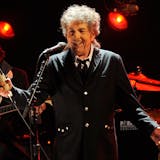Long before he came to Minnesota, Mark Coyle heard a proverb that stuck with him. Money isn't the most important thing in college athletics, the saying goes, but it's right up there with oxygen.
Though the Gophers athletic director grinned when he recalled those words, the message is serious — particularly when plunging ticket sales mean the Gophers are not breathing as easily as Coyle would like.
In three years, ticket revenue from Gophers sports fell by $8 million — a 28 percent drop — to $20.5 million in 2017, according to the most recent accounting. Most of the decline occurred in football, men's basketball and men's hockey, the three sports the U counts on to help fund the entire athletic department.
Ticket sales have long been a top revenue stream for Gophers sports, and the escalating costs of running an athletic department make it more essential than ever to fill those seats. "We need ticket sales to pick up for us," Coyle said. "Ticket sales is the lifeline of your program, and we need to pay attention."
Empty seats this school year will come in more colors than just maroon and gold. College football's average attendance fell 3.2 percent last season, the second-largest drop since the NCAA began keeping records in 1948. The numbers for Division I men's basketball are sagging, too; the national average attendance rose slightly last year to 4,807, ending a 10-year decline, but that is well below the 2007 average of 5,548.
"Every university, every athletic department, every conference is talking about this at the highest levels," said Mike Wierzbicki, the Gophers' assistant athletic director for fan development. "People see a marquee game in prime time on TV and think everything's perfect. But there's a lot more to it."
With his department's budget set at $121 million for the coming year, Coyle is overseeing changes designed to get more paying customers through the doors. Last year, the U began placing greater emphasis on courting groups and businesses, and it has cut prices for some football and men's hockey tickets. Ryan Dillon, assistant athletic director for ticket sales and service, said the new approach has boosted ticket revenue by 1 percent in 2018.
Fans will continue to see swaths of empty seats at football games, however. The Gophers sold 27,885 non-student season tickets three years ago, but that number sat at 21,522 as of last week. Football attendance did increase slightly per game last season, but there's work to be done to fill TCF Bank Stadium this fall. Just over 37,000 tickets have been distributed for Thursday's opening game — 6,000 short of last August's opener.



